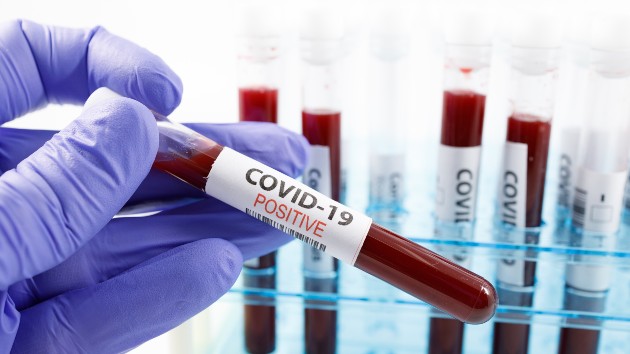
Ovidiu Dugulan/iStockBy NASIR MALIM, ABC News
(NEW YORK) — As larger numbers of people recover from COVID-19, researchers are learning more about “brain fog” in those affected by the virus.
For months, doctors and researchers have been aware of a range of longer-term symptoms afflicting people after recovering from an active COVID-19 infection. One such symptom, generally referred to as “brain fog,” can take the shape of confusion, difficulty thinking and concentrating, short-term memory loss, and in severe cases, has even been reported to cause delirium and psychosis.
While scientists still don’t know for sure what causes brain fog, they’re zeroing in on a few theories. Mainly, scientists increasingly believe brain fog happens when cells that are involved in response to an infection make their way to atypical places, such as the brain.
A key finding emerged when researchers autopsied brains of COVID victims, discovering certain cells that shouldn’t have been there. These large cells, known as megakaryocytes, might be taking up precious space, leaving less room for blood to pass to the brain.
This phenomenon might be unique to COVID, according to David Nauen, MD, PH.D, a professor of pathology at the Johns Hopkins University School of Medicine.
“To have megakaryocytes in the brain has never been seen before, I couldn’t find any reference in my search this past summer with megakaryocytes noted in human brain capillaries. This is very new for COVID that they are doing this,” Nauen told ABC News. “This could help us bring up a better picture of what’s going on.”
If these massive cells are indeed blocking blood flow to the brain, it would starve the brain of enough oxygen and nutrients to work at full capacity.
“The brain cortex is richly vascularized with capillaries, if some proportion of capillaries are blocked or occluded by these cells, it blocks some level of blood flow. An alteration in flow of blood in a system that is so precisely delivering oxygen based on time and need could be leading to impaired cognitive function, like a brain fog picture,” said Nauen, who led the research into the topic, which was published in the Journal of American Medical Association Neurology.
In fact, the cells seen were not in small number, “the findings on autopsy suggest that the burden could be significant,” Nauen said.
The next question Nauen said is about how these megakaryocytes are getting there and what sort of communication the cells are using in the process.
Other scientists have theories, which may add to Nauen’s findings.
According to Adrienne A. Boire, MD, PhD, a neuro-oncologist and neurologist at Memorial Sloan Kettering Cancer Center, people who experience brain fog may have inflammation in the brain evidenced by a protein called “cytokines” swirling around the tissue that surrounds the brain and spinal cord.
These proteins are usually associated with the immune system, which leads to inflammation and can damage vital organs. Now, researchers like Boire say they’re finding these proteins in cerebrospinal fluid, or CSF.
“We did find a large influx of cytokines in the CSF. Cytokines are small proteins that cells use to communicate with each other,” Boire told ABC News.
Severe COVID infections are known to cause inflammation in the body. It’s possible that this process causing inflammation in the brain can cause the brain to not function normally.
For now, these new findings lead to more questions.
For Boire, people who recover from COVID without any lingering problems may hold the key to unlocking the mystery of why some people develop “brain fog.”
“The question of how this finding affects patients without severe disease is still an open question,” Nauen said.
“These ‘unaffected’ patients are key to understanding why some people avoid “brain fog” and why others are disabled by them,” Boire said.
Copyright © 2021, ABC Audio. All rights reserved.
